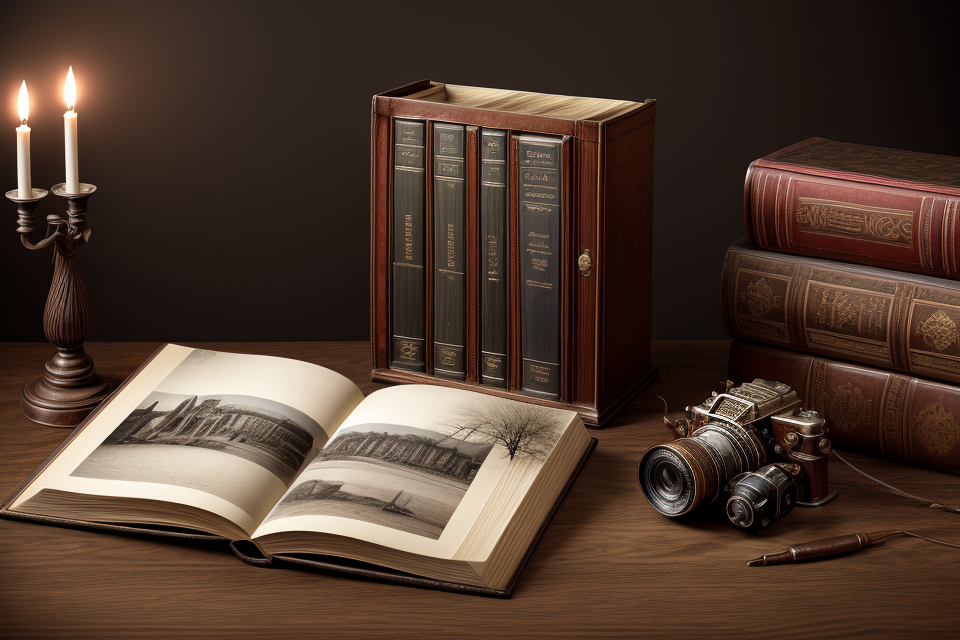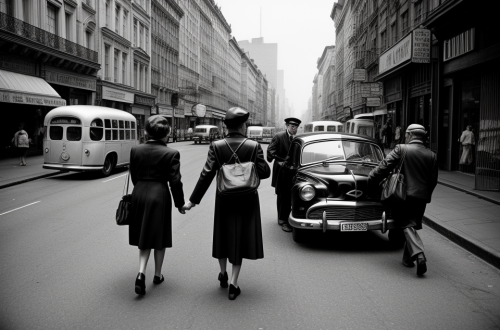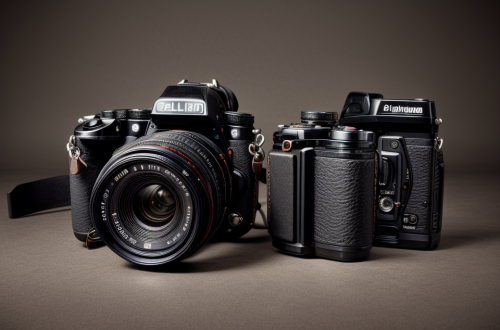USER
The evolution of photography books is a fascinating journey that takes us through the ages, uncovering the very first photographs captured on paper and the stories they tell. The question of what was the first photography book is a subject of much debate, but one thing is for sure – it marks a significant milestone in the history of photography. In this article, we will explore the origins of photography books, tracing their development from the earliest known examples to the stunning collections of images we see today. So join us as we embark on this exciting journey through the world of photography books and discover the first book to capture the magic of photography.
The Beginnings of Photography Books
The Roots of Photography Book Publishing
As the art of photography began to develop in the mid-19th century, so too did the idea of collecting and presenting photographs in a book format. The roots of photography book publishing can be traced back to the early photographers who sought to document and showcase their work.
Early Photographers and their Works
During the early years of photography, photographers such as William Henry Fox Talbot and Louis Daguerre were experimenting with different techniques and processes to capture and produce images. These pioneers of photography recognized the potential of the medium as a means of artistic expression and began to document their work in book form.
The Rise of Photography as an Art Form
As photography continued to evolve, it began to be recognized as a legitimate art form. Photographers such as Julia Margaret Cameron and Alfred Stieglitz began to use the medium to express their artistic vision and capture the beauty of the world around them.
The rise of photography as an art form was accompanied by a growing interest in collecting and exhibiting photographs. Photographers and collectors alike recognized the importance of presenting photographs in a book format as a means of preserving and showcasing their work.
Over time, the photography book has become an integral part of the medium, allowing photographers to share their vision and ideas with a wider audience. Today, photography books continue to be an important medium for photographers to express their artistic vision and to share their work with the world.
The First Photography Book: The Pencil of Nature
The Pencil of Nature, published in 1844, is considered the first photography book in history. It was created by William Henry Fox Talbot, a British scientist and inventor who made significant contributions to the development of photography. The book consists of 27 photogenic drawings, which are early photographs made using Talbot’s process of photogenic drawing.
Overview of The Pencil of Nature
The Pencil of Nature is a book that showcases Talbot’s experiments with photography and his attempts to understand the medium. The book includes descriptions of Talbot’s photographic process, as well as explanations of the science behind the process. It also includes some of Talbot’s own photographs, which he used to illustrate his ideas.
William Henry Fox Talbot’s Contributions to Photography
Talbot was one of the first photographers to explore the possibilities of photography as an art form. He was also one of the first to recognize the potential of photography as a means of communication and record-keeping. In addition to his work on photography, Talbot was also a scientist and inventor, and he made significant contributions to the fields of chemistry and physics.
The Significance of The Pencil of Nature in the History of Photography
The Pencil of Nature is significant because it represents the beginning of the photography book as an art form. It also demonstrates Talbot’s understanding of the potential of photography as a means of communication and record-keeping. The book helped to establish photography as a legitimate art form and paved the way for future photographers to explore the medium. Additionally, the book is an important historical document that provides insight into the early days of photography and the mind of one of its most important pioneers.
The Impact of The Pencil of Nature on Photography Books
The Influence of The Pencil of Nature on Future Photography Books
- The Pencil of Nature as a Blueprint for Future Photography Books
- Emphasis on Sequential Storytelling: The Pencil of Nature established the idea of using photography books to tell a story or convey a narrative, which would become a common theme in future photography books.
- Experimentation with Design and Layout: The Pencil of Nature’s innovative design and layout inspired photographers and publishers to push the boundaries of traditional book formats, experimenting with different sizes, shapes, and binding techniques to create unique and engaging photography books.
- Importance of Text and Captions: The Pencil of Nature incorporated text and captions alongside the photographs, providing context and deeper meaning to the images. This approach would become a standard feature in future photography books, enhancing the reader’s understanding and appreciation of the photographs.
- The Pencil of Nature as a Catalyst for Photography as an Art Form
- Recognition of Photography as an Artistic Medium: The Pencil of Nature’s artistic approach to photography elevated the perception of photography as an art form, encouraging photographers to create more thought-provoking and visually compelling images that could stand alone or within a narrative.
- Collaboration between Photographers and Artists: The Pencil of Nature’s collaboration between photographers and artists, such as Julia Margaret Cameron, fostered a new era of interdisciplinary collaborations in photography, leading to more diverse and creative photography books in the future.
- Photography Books as Collectible Art Objects: The Pencil of Nature’s high-quality printing, design, and craftsmanship set a precedent for future photography books to be considered not only as a means to convey visual stories but also as collectible art objects in themselves, highlighting the value of photography as a legitimate art form.
The Pencil of Nature and the Development of Photography as an Art Form
The Pencil of Nature and the Evolution of Photography Techniques
The Pencil of Nature, a photography book published in 1849 by William Henry Fox Talbot, was a groundbreaking work that played a significant role in the development of photography as an art form. This book, which showcased Talbot’s own photographic images, demonstrated the potential of photography as a means of artistic expression. The images included in The Pencil of Nature were not simply reproductions of reality, but rather were carefully composed and arranged to create a visual narrative. By presenting photography in this way, Talbot helped to establish photography as a legitimate form of art.
The Pencil of Nature and the Growth of Photography as a Creative Medium
In addition to its impact on the development of photography as an art form, The Pencil of Nature also played a key role in the growth of photography as a creative medium. The book’s images were not simply records of reality, but rather were the result of Talbot’s artistic vision and technical skill. By presenting photography in this way, Talbot encouraged other photographers to see the medium as a means of creative expression, rather than simply a tool for documenting the world around them.
The Pencil of Nature and the Emergence of Photography as a Fine Art
The Pencil of Nature was not only a groundbreaking work in the field of photography, but also played a significant role in the emergence of photography as a fine art. By presenting photography as a means of artistic expression, Talbot helped to elevate the medium in the eyes of the art world. The book’s images were not simply technical reproductions, but rather were the result of Talbot’s artistic vision and technical skill. As a result, The Pencil of Nature helped to establish photography as a legitimate form of art, paving the way for future photographers to see the medium as a means of creative expression.
The Pencil of Nature and the Photography Book Market
The Pencil of Nature and the Growth of the Photography Book Market
The publication of The Pencil of Nature marked a significant turning point in the history of photography books. William Henry Fox Talbot’s pioneering work not only showcased the potential of photography as an art form but also had a profound impact on the growth of the photography book market. Prior to the release of The Pencil of Nature, photography books were scarce, and the market for such publications was virtually nonexistent. However, with the publication of Talbot’s book, the demand for photography books began to soar, paving the way for a thriving market that would eventually give rise to a multitude of photography books, journals, and magazines.
The Pencil of Nature and the Development of the Photography Book Industry
The publication of The Pencil of Nature also played a crucial role in the development of the photography book industry. Prior to the emergence of photography books, there was no established market or infrastructure to support the production and distribution of such publications. The success of The Pencil of Nature, however, served as a catalyst for the growth of the photography book industry, spurring the development of new technologies, publishing models, and distribution networks.
One of the key factors that contributed to the success of The Pencil of Nature was the innovative printing process used to produce the book. Talbot employed a combination of photogravure and intaglio printing techniques, which allowed him to achieve a level of detail and nuance that had never before been seen in photography books. This groundbreaking approach to printing set a new standard for photography books, inspiring other photographers and publishers to experiment with new printing techniques and innovative design concepts.
In addition to its technical innovations, The Pencil of Nature also had a significant impact on the artistic and cultural discourse surrounding photography. By presenting a collection of Talbot’s own photographs, the book demonstrated the potential of photography as a medium for artistic expression, challenging traditional notions of art and paving the way for a new generation of photographers to explore the creative possibilities of the medium. The Pencil of Nature’s influence on the photography book market and the broader cultural landscape cannot be overstated, as it laid the foundation for the development of a vibrant and dynamic industry that continues to thrive to this day.
Modern Photography Books and The Pencil of Nature
The Influence of The Pencil of Nature on Contemporary Photography Books
- The Pencil of Nature, a book by William Henry Fox Talbot, is considered the first photography book.
- The book showcased Talbot’s calotype process, a precursor to modern photography.
- The Pencil of Nature had a significant impact on the development of contemporary photography books.
The Pencil of Nature and the Contemporary Photography Book Market
- The Pencil of Nature helped establish the photography book as a viable art form.
- The book’s unique combination of text and images set a precedent for contemporary photography books.
- Today, the photography book market is thriving, with numerous books showcasing various styles and genres of photography.
The Pencil of Nature and the Development of Contemporary Photography Books
- The Pencil of Nature’s emphasis on the narrative potential of photography influenced the development of contemporary photography books.
- Many contemporary photography books use narrative techniques to convey stories and ideas through images.
- The book’s innovative use of sequencing and page design has also been influential in the development of contemporary photography books.
- Photographers today continue to push the boundaries of the photography book format, experimenting with new ways to tell stories and convey meaning through images.
The Pencil of Nature and the Evolution of Photography as an Art Form
-
The Pencil of Nature and the Evolution of Photography as a Creative Medium
- The Role of Photography in the Fine Arts
- The Emergence of Photography as a Legitimate Art Form
- The Pencil of Nature as a Milestone in the Acceptance of Photography as Art
- The Influence of Photography on Painting and Sculpture
- The Use of Photographs as Reference for Painters and Sculptors
- The Inspiration of Photographic Techniques on Painting and Sculpture
- The Influence of Photography on Literature
- The Use of Photographs as a Means of Telling Stories
- The Inspiration of Photographic Techniques on Literary Forms
- The Evolution of Photography as a Communication Tool
- The Use of Photographs in Journalism and Reportage
- The Development of Photographic Techniques for Documentary Purposes
- The Influence of Photography on Science and Technology
- The Use of Photographs in Scientific Research and Documentation
- The Development of Photographic Techniques for Technical Purposes
- The Role of Photography in the Fine Arts
-
The Pencil of Nature and the Evolution of Photography Techniques
- The Technical Innovations in The Pencil of Nature
- The Use of Collodion Process in The Pencil of Nature
- The Importance of the Collodion Process in the Evolution of Photography
- The Influence of The Pencil of Nature on Photographic Techniques
- The Development of Wet Plate Processes Inspired by The Pencil of Nature
- The Influence of The Pencil of Nature on the Advancement of Photographic Techniques
- The Contribution of The Pencil of Nature to the Art of Photography
- The Pencil of Nature as a Showcase of Photography as an Art Form
- The Influence of The Pencil of Nature on the Development of Photographic Aesthetics
- The Technical Innovations in The Pencil of Nature
The Pencil of Nature played a crucial role in the evolution of photography as an art form. The publication of The Pencil of Nature marked a significant turning point in the acceptance of photography as a legitimate art form. It was the first photographically illustrated book and its production and dissemination was an innovative achievement. The book featured a series of photographs taken by William Henry Fox Talbot, who is widely regarded as one of the founders of photography. The Pencil of Nature showcased Talbot’s photographs in a way that demonstrated the potential of photography as an art form.
The Pencil of Nature was also a milestone in the history of photography as a medium for the representation of reality. The photographs in the book were not merely reproductions of the visible world, but they were also a means of exploring the potential of photography as a medium for artistic expression. The photographs in The Pencil of Nature were not only technical demonstrations of photography’s capabilities, but they were also aesthetic experiments that demonstrated the creative possibilities of the medium.
The Pencil of Nature had a profound influence on the development of photography as a creative medium. The book demonstrated the potential of photography as a means of artistic expression and inspired photographers to explore the creative possibilities of the medium. The Pencil of Nature also had a significant impact on the development of photographic techniques. The book featured photographs taken using the calotype process, which was a new photographic technique that was introduced by Talbot. The calotype process was a significant technical innovation that made it possible to produce negative images
The Legacy of The Pencil of Nature in the World of Photography Books
The Enduring Influence of The Pencil of Nature on Photography Books
- Pioneering Layout and Design: The Pencil of Nature revolutionized the layout and design of photography books, incorporating William Henry Fox Talbot’s calotype process to create an illustrated narrative. This innovative approach to bookmaking established a precedent for future photography books, with many subsequent publications following suit in their layout and design.
- Celebrating the Medium: The Pencil of Nature celebrated the photographic medium itself, emphasizing its potential for artistic expression. By showcasing Talbot’s images of everyday objects and scenes, the book highlighted the beauty and complexity of the medium, encouraging future photographers and publishers to explore photography’s expressive capabilities in their own work.
- Inspiring Collaboration: The Pencil of Nature demonstrated the power of collaboration between photographers, publishers, and bookmakers. By bringing together Talbot’s technical innovations and Hill’s artistic vision, the book exemplified the potential for synergy between different creative disciplines in the realm of photography books. This collaboration inspired subsequent photography book creators to work together across disciplines to produce groundbreaking work.
The Continued Relevance of The Pencil of Nature in the Photography Book Market
- Enduring Aesthetic Appeal: The Pencil of Nature’s aesthetic appeal remains relevant today, with its use of calotypes, drawings, and engravings providing a unique visual experience that continues to captivate readers. The book’s fusion of various artistic mediums offers a timeless quality that resonates with contemporary audiences, making it a valuable addition to any photography book collection.
- Historical Significance: As the first photography book, The Pencil of Nature holds immense historical significance in the development of the medium. It provides insight into the early days of photography, offering a glimpse into the challenges and opportunities faced by pioneers like Talbot and Hill. This historical context makes the book an essential reference for photographers, scholars, and collectors alike.
- Innovative Techniques: The Pencil of Nature’s incorporation of William Henry Fox Talbot’s calotype process represents a pivotal moment in the history of photography. By experimenting with this process, Talbot and Hill paved the way for new techniques and technologies that would later transform the photography industry. As such, The Pencil of Nature remains a vital resource for understanding the evolution of photography and its associated technologies.
FAQs
1. What is considered the first photography book?
The first photography book is considered to be “The Pencil of Nature,” published in 1849 by William Henry Fox Talbot. It was a book of photograms, which were images created by placing objects on light-sensitive paper and exposing it to sunlight. The book contained 24 plates, each depicting a different scene or object.
2. Who was William Henry Fox Talbot?
William Henry Fox Talbot was a British photographer, inventor, and scientist who is widely regarded as one of the inventors of photography. He is credited with several key contributions to the development of photography, including the creation of the calotype process, which allowed for the production of multiple copies of an image.
3. What is the significance of “The Pencil of Nature”?
“The Pencil of Nature” is significant because it was the first book to demonstrate the potential of photography as an art form. It showed that photography could be used to create not just accurate representations of reality, but also works of art that could evoke emotion and tell stories. The book was also important because it established the principles of photographic printing, which would later be refined and expanded upon by other photographers.
4. What is a photogram?
A photogram is an image created by placing objects on light-sensitive paper and exposing it to light. The resulting image is a silhouette of the objects, with areas of the paper that were not exposed showing as white. Photograms were one of the earliest forms of photography and were popular in the 19th century, particularly among photographers who were experimenting with new techniques and processes.
5. How many plates were in “The Pencil of Nature”?
“The Pencil of Nature” contained 24 plates, each depicting a different scene or object. The plates were made by exposing paper coated with a light-sensitive mixture to sunlight, creating a negative image that could be printed onto paper using a printing press. The book was hand-bound and printed in a limited edition of 75 copies.





